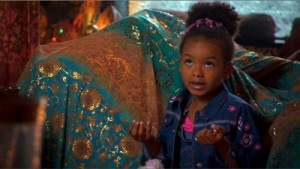Jessica Yu (In the Realms of the Unreal, Ping Pong Playa) turns her attentions to explore a universal yet simple question of childhood: Where do babies come from? Produced by Nonfiction Unlimited, The Kinda Sutra became an official selection of both the 2010 LunaFestival as well as 2009 Sundance Film Festival. And while the premise may be simple, Yu’s documentary touches on the complex social structures that continue to shape the social discourse on this scientific phenomenon. Through a series of interviews with people of various ages and races, Yu set out to document the countless stories that misrepresent the process of reproduction. Yu makes clear that regardless of social background, adults have created intricate stories, albeit age-appropriate, on this process. Ranging from the story of the stork to a simplified model of preformism, many stories have little to do with the actual event. In some cases, an explanation is not given at all, leaving kids and their endless imagination to piece it together. Coupled with all of this, Yu uses vibrant animations (by Stardust Studios) to illustrate the tales of misguided youths.
Most interestingly, the film ends with a handful of interviews with various children all that have been told the scientific explanation of the sperm and the egg. While surely more accurate, the grammar used across the board reproduces the underlying cultural assumptions about the event of the reproduction. It remains clear that the medical culture has pervaded the popular culture, in seeing the metaphor of the female reproductive system as a machine designed to produce. Quite literally, one interview relates the womb as a mechanized oven. Moreover, extending the metaphor of birthing as labor, such interpretation maintains unnecessary rhetoric of positivity in discussing the maturation and role of the sperm. One interview says that after the “connection” is made, the man “makes the baby.” Undoubtedly, through Yu’s various interviews, we are able to hear the consequences of the current lexicon. As a whole, The Kinda Sutra can act as a vehicle to highlight how people often do not notice the obviousness of everything that is said around them.
Further Readings:
Martin, Emily. “The Egg and the Sperm: How Science Has Constructed a Romance Based on Stereotypical Male-Female Roles.” Signs 16.3 (1991): 485-501. JSTOR. Web. <http://www.jstor.org/stable/3174586>.
Martin, Emily. The Woman in the Body: A Cultural Analysis of Reproduction. Boston: Beacon, 1992. Print.
Martin Mathay ’15

